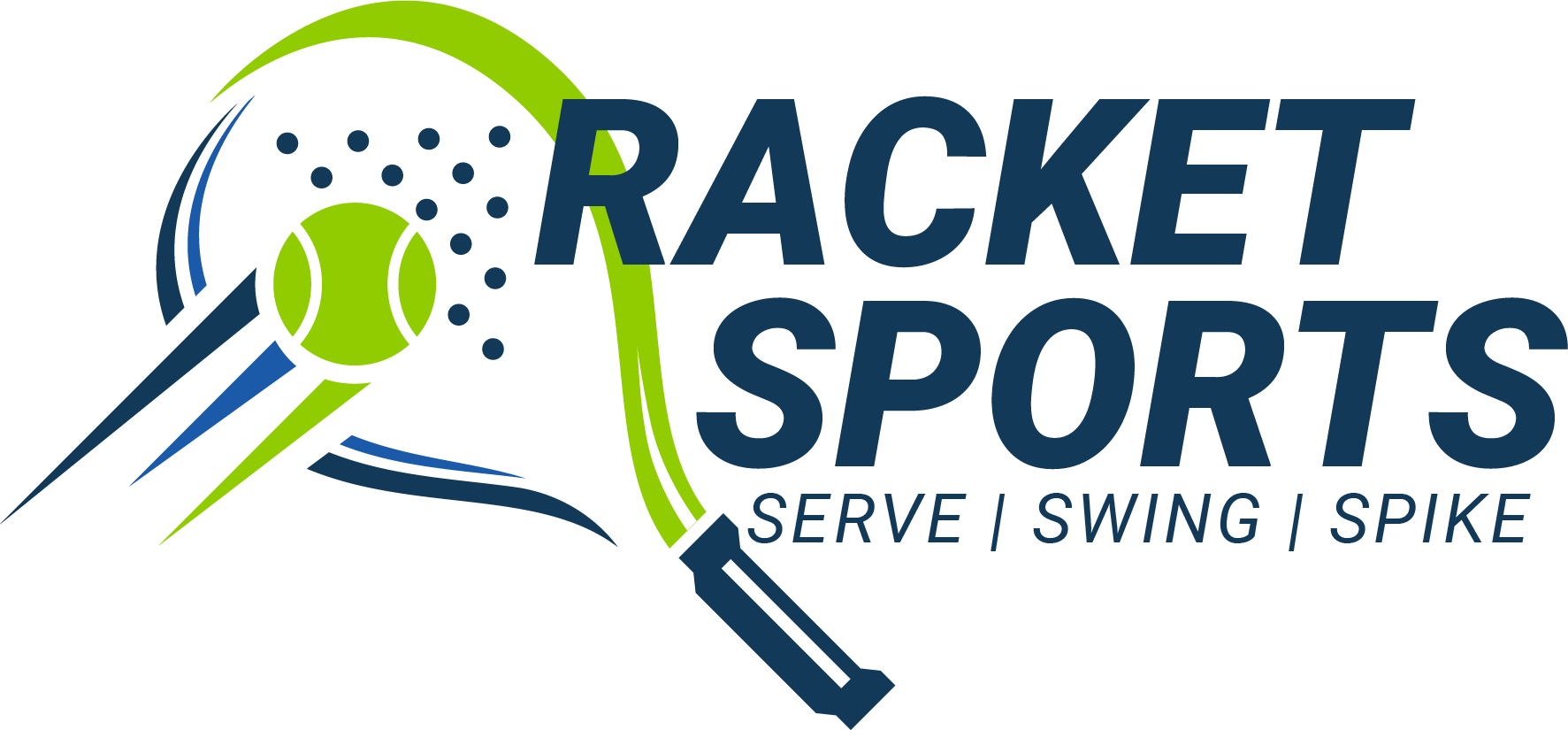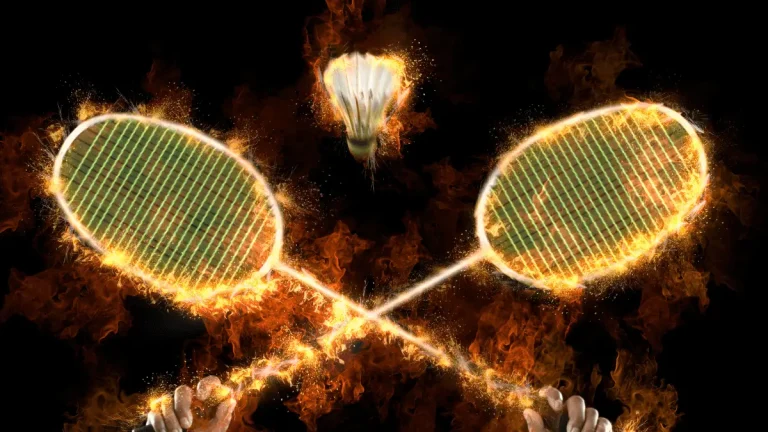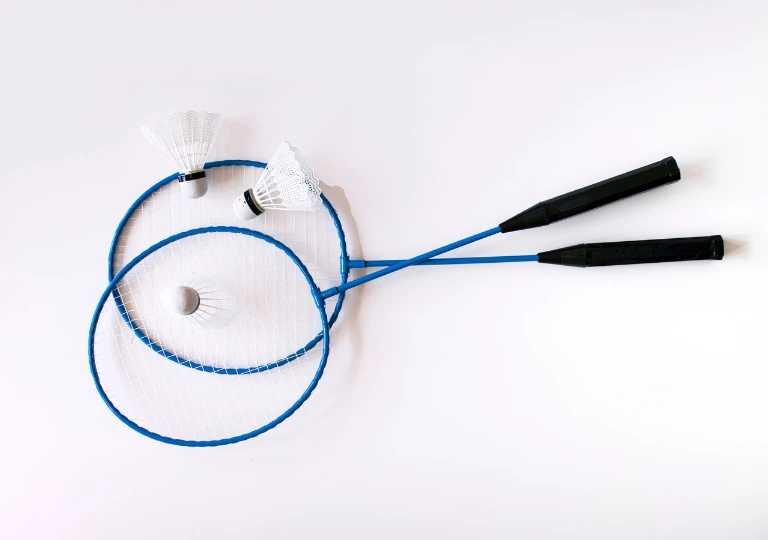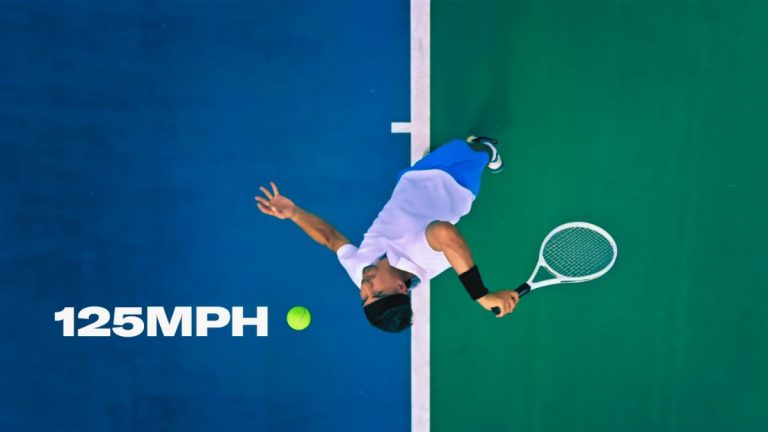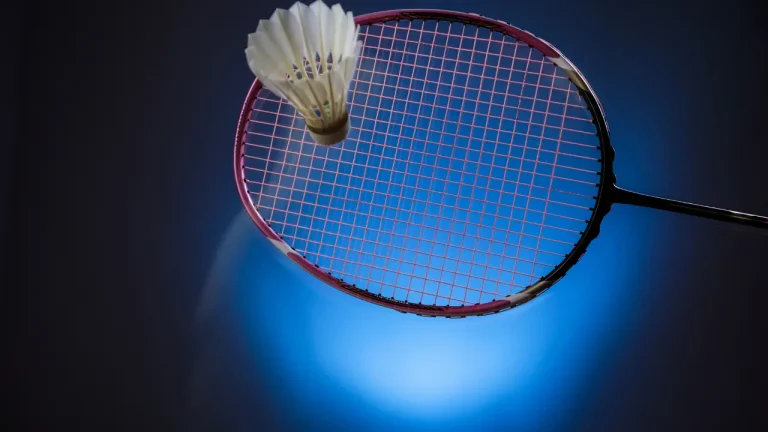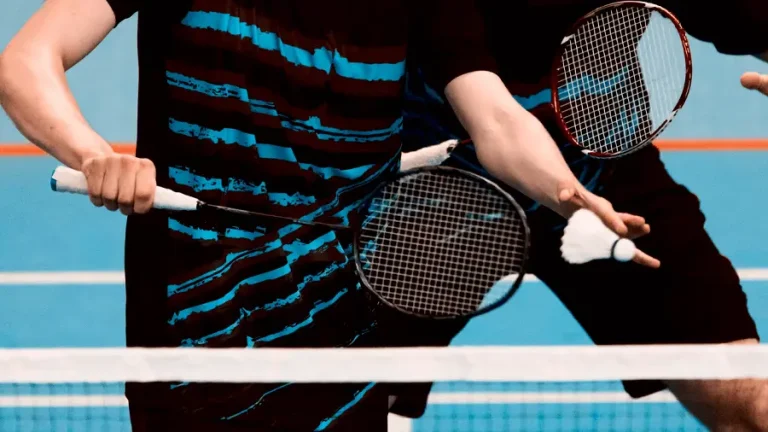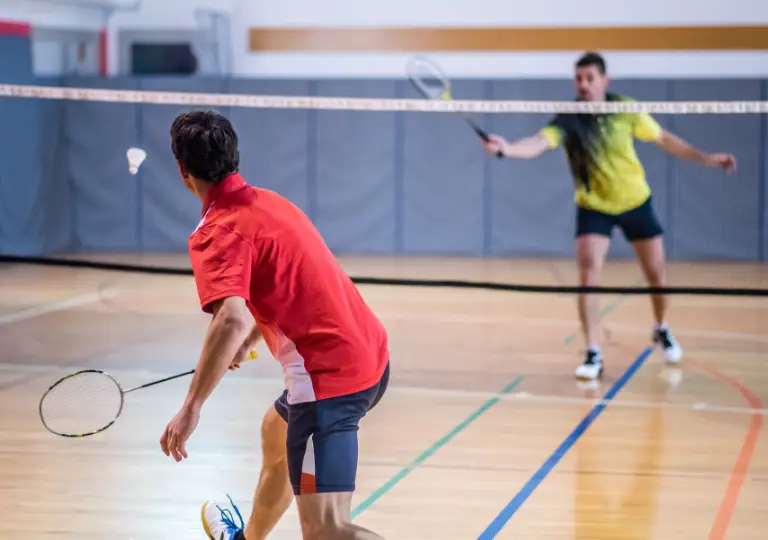How to Play Badminton – Expert’s Recommendations 2025
Imagine the thrill of participating in the fastest racket game in the world – Badminton which may resemble tennis. Whether played with two or four players, this sport offers a unique and thrilling experience. The objective is to score points skillfully, hitting the shuttlecock over the net. If you’re wondering how to play Badminton, it’s important to grasp the rules of this exciting sport before stepping onto the court for your inaugural match.
Explore the dynamic movements, strategic shots, and swift footwork that make Badminton an incredibly captivating sport. Whether you strive to achieve greatness or aim to leave a lasting impression, let us embrace the world of Badminton together. Prepare to serve, smash, and soar to victory in this electrifying racket game.
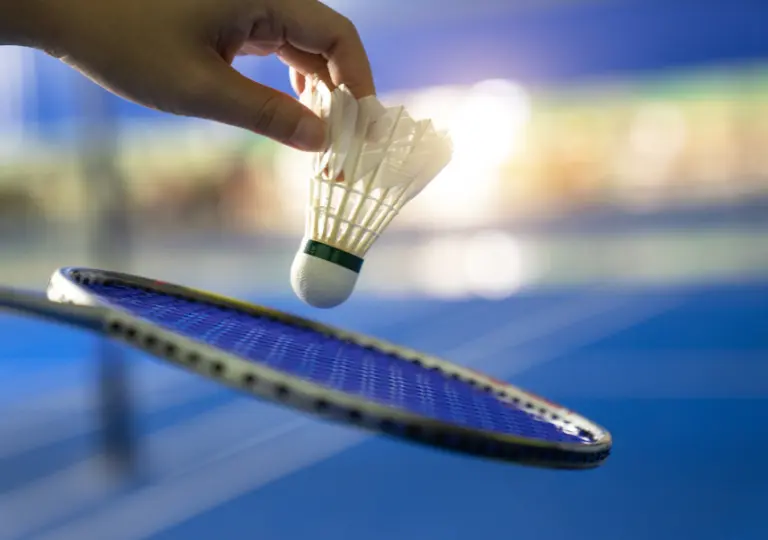
How To Play Badminton, Step-By-Step Guide For Beginners
Are you a beginner looking for a guide to start playing Badminton? This sport is rapidly gaining popularity among kids worldwide, and it’s known for its fast-paced and enjoyable nature.
Whether you’re interested in playing for fun or considering a more serious approach, Badminton should be your first choice. It’s a versatile sport that offers numerous benefits.
Since you’re new to Badminton, this article is here to provide you with all the essential details you need to know to get started. We’ll cover everything from the basic rules to fundamental techniques, ensuring you have a solid foundation.
Equipment For Badminton
To play Badminton, you typically need the following equipment:
Badminton Racket: A lightweight racket specifically designed for Badminton.
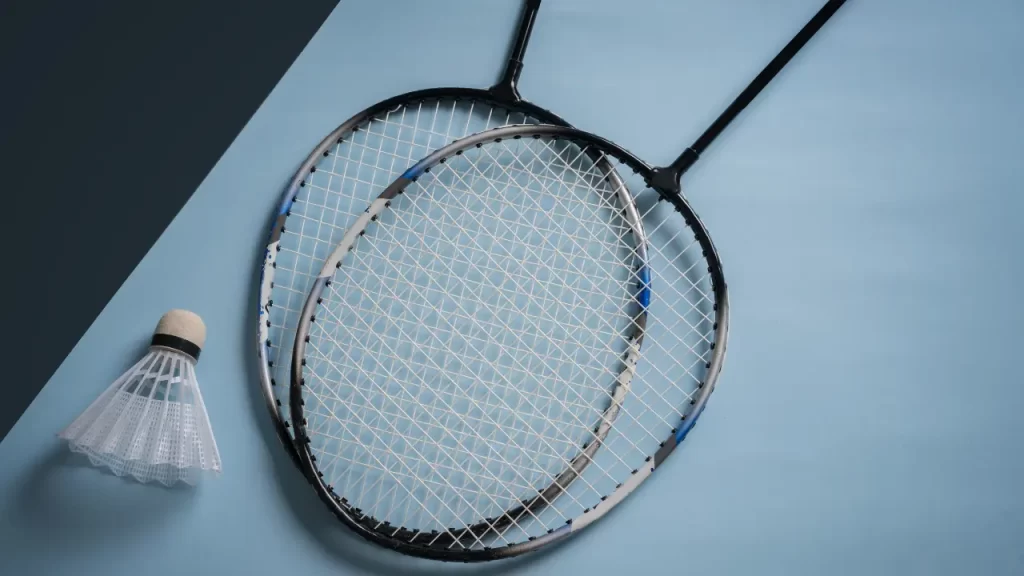
Shuttlecocks: Also known as shuttle or birdie, shuttlecocks are the projectiles used in Badminton.
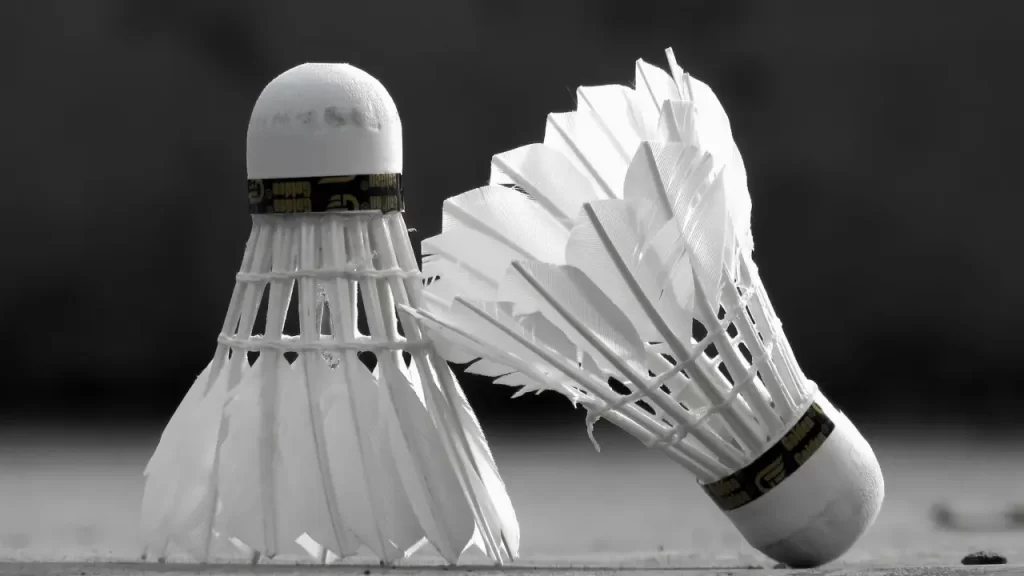
Badminton Net: A net that divides the court into two halves. The trap should be 5 feet tall at the edges and 5 feet 1 inch tall at the centre. It should have a width of 20 feet for doubles matches and 17 feet for singles matches.
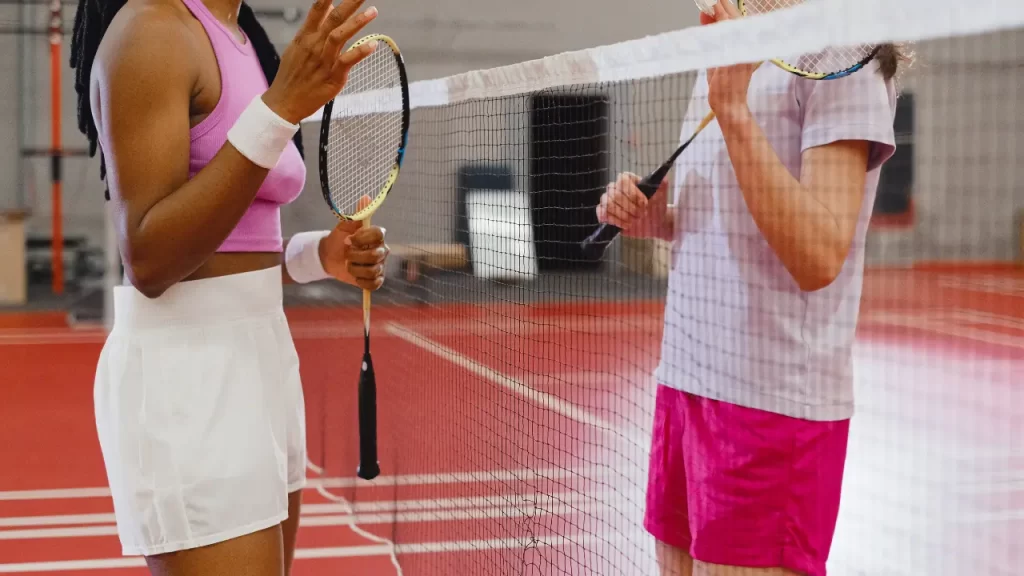
Badminton Court: A rectangular playing area divided by a net. The court measures 44 feet in length and 17 feet in width for doubles matches and 44 feet in length and 13 feet in width for singles matches.
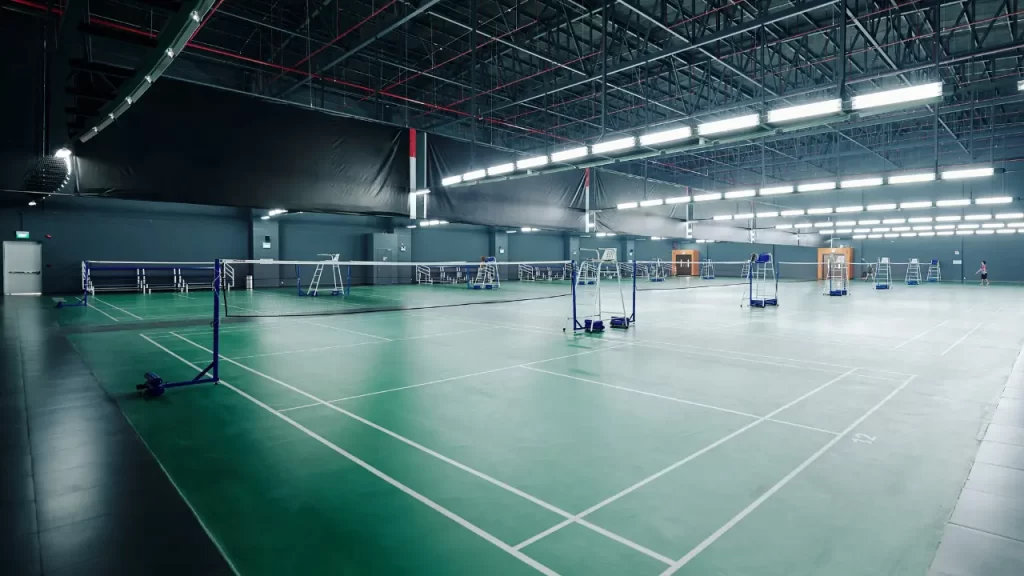
Court Lines: Lines mark the boundaries of the badminton court.
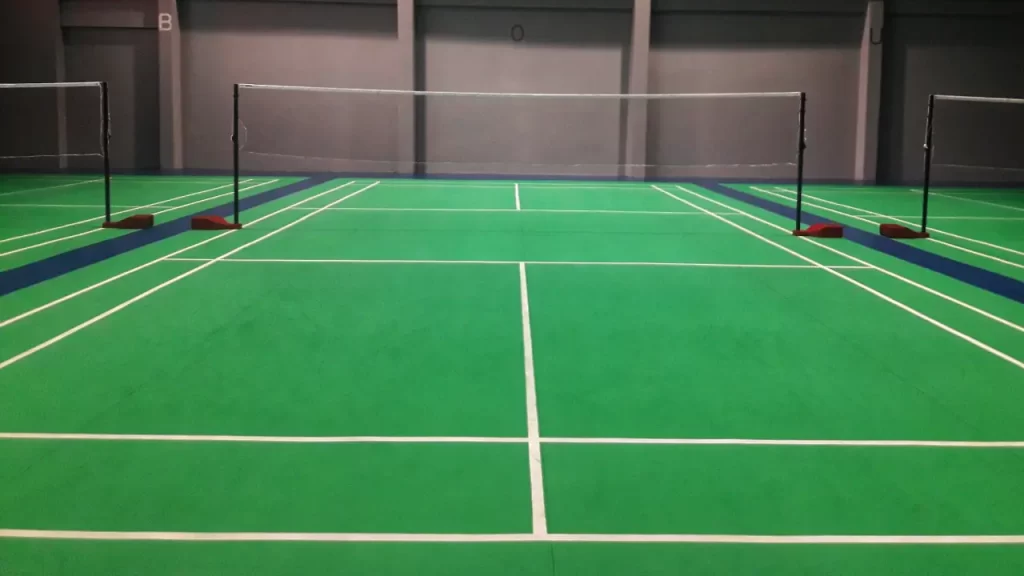
Badminton Shoes: Specialized shoes designed for Badminton that provide good grip, support, and cushioning.

Basic Rules of Badminton
Scoring
A compelling racket sport resembling tennis called badminton can be played by two players or by two teams of two players. The objective is to be the first individual or team to reach 21 points.
Badminton 15 Points Scoring System
The badminton 15-point scoring system is a quicker, simpler alternative to the traditional 21-point system. Each game goes to 15 points, with no need for a two-point lead at 14-14; it’s sudden-death.
This format is often used in casual play for faster-paced games. In competitive badminton, the standard 21-point system is still the norm.
Badminton Court
The measurements of a badminton court vary depending on whether you’re playing singles or doubles. In both categories, the length of the court remains the same at 44 feet, while the width differs. For singles, the width is 17 feet, whereas, for doubles, it expands to 20 feet.
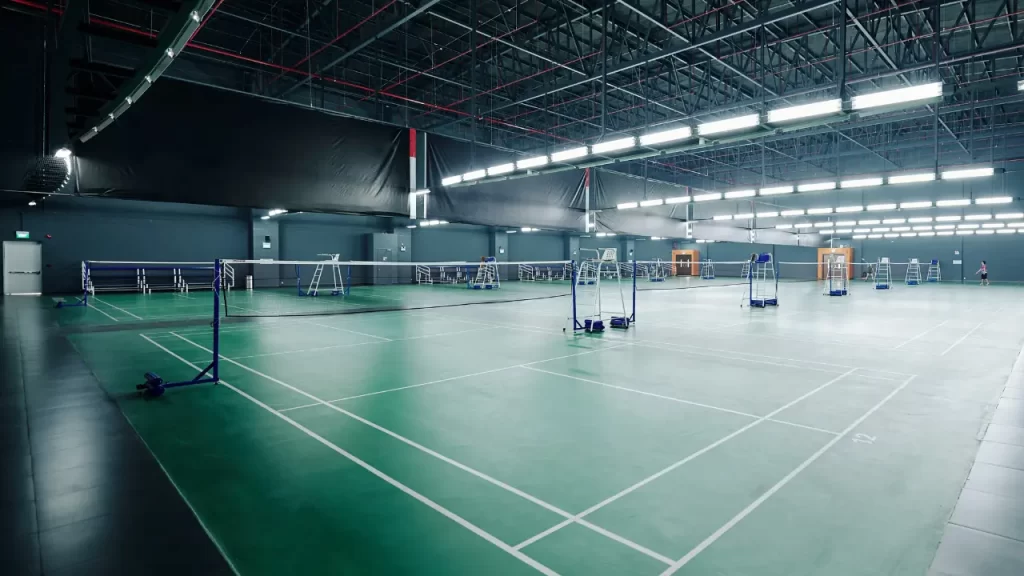
To accommodate the increased width in doubles, an additional side box of 1.5 feet is added on each lateral side of the court. This extension ensures sufficient space for players to move and strategize during doubles matches.
The net acts as the central divider, splitting the court into two equal parts. Within each section, you’ll find front and back service lines, marking the boundaries for serving. These lines help regulate the position from which the shuttlecock must be served.
To further divide the area between the service lines, a mid-service line runs longitudinally through the centre of the court. This line serves as a reference point, assisting players in maintaining proper positioning during gameplay.
By understanding the distinctions between singles and doubles court measurements, as well as the designated service lines and mid-service line, you’ll be well-equipped to navigate and strategize effectively on the badminton court.
Serving
The game begins with an underhand serve from the right side of the court. The serving team aims to clear the net and land within the service area. If unsuccessful, the opposing team scores a point and takes over the serve. Serve from the right when the score is even and from the left when it’s odd. Understanding these rules ensures fair gameplay and scoring opportunities in Badminton.
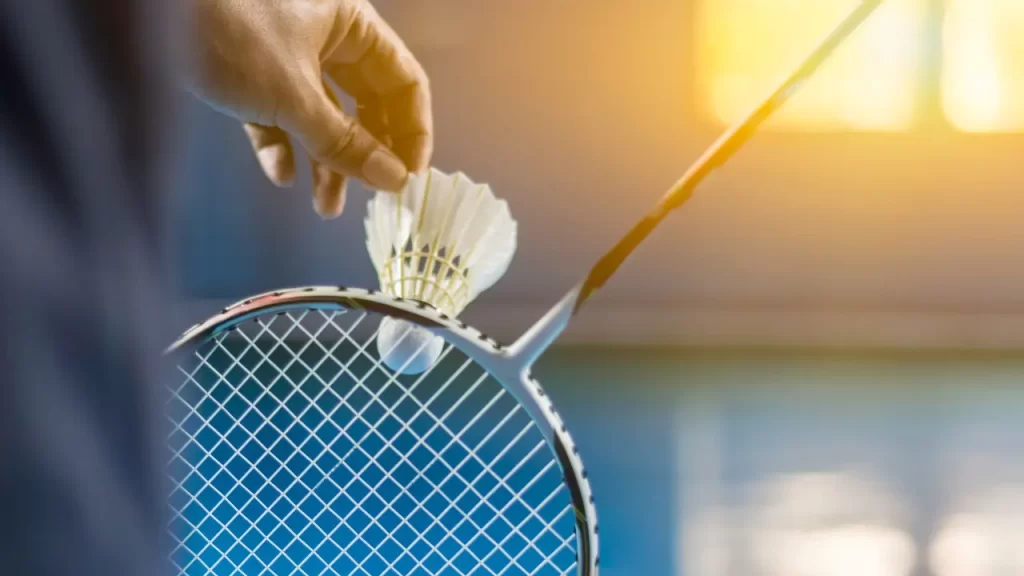
The Serving Rule for Singles
Serving Rules for Doubles
The basic service rules remain the same. The first serve must serve from the right side of the service court, and each subsequent serve after scoring an even number of points should also come from the right. When winning an odd number of points, the serve should come from the left service court.
The receiver must stand on the opposite service court, and the pair that wins the point becomes the server for the next point.
Here’s how the right to serve works in doubles badminton:
Players on the receiving side can only receive two consecutive services in the same game.
If a player serves or receives out of turn or from the wrong side of the court, it is considered a service court error and immediately corrected.
During the game, players can position themselves anywhere on their side of the court if they don’t obstruct the view of the server or receiver.
A scoring point is earned when the serving or receiving sides win a rally. A rally is a series of shots exchanged between the teams until the shuttlecock touches the ground, hits the net, or goes out of bounds.
A team needs to score 21 points with a two-point differential to win a game. A match consists of three games.
After each game, the sides must switch positions, and any player from the winning team can serve in the next game, while any player from the losing team can receive.
How to Start Playing Badminton
The game kicks off with a toss, where the referee flips a coin, and one player calls ‘Head’ or ‘Tail’. The toss winner gets to choose either their preferred side of the court or the option to serve or receive first. The opponent then makes their choice accordingly.
Serving: The first serve is made from the right-hand service court diagonally across the net. The server must hit the shuttlecock underarm at the height of 1.15m. The server needs to stay within the boundaries of the service court and serve from the correct side. If the shuttlecock hits the net and fails to cross over after the serve, it must be served again. If the server commits a fault, the opponent gets the opportunity to serve.
Receiving: The receiving player stands in the correct service court diagonally opposite the server’s court. They return the shuttlecock, initiating a rally. After returning the service, players can move around their side of the court.
Scoring: When a player hits the shuttlecock outside the court boundaries or fails to return it from their side, the opponent scores a point, and the rally concludes.
End Change: At the end of a game, players switch ends. In a deciding game, players change ends when one player or pair reaches 8 points (men) or 6 points (ladies).
How to Serve in Badminton
Positioning: Stand in the right service court if your score is even or the left service court if it’s odd.
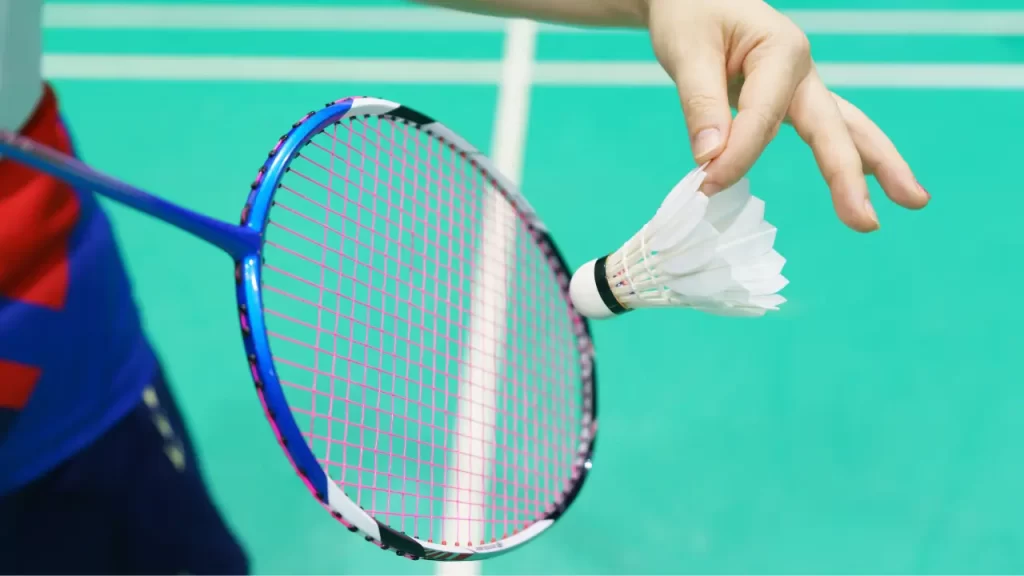
Grip: Hold the racket firmly, using the basic forehand grip as a common choice. Hold it like a hammer, with fingers wrapped around the handle and thumb resting against the back surface.
Shuttlecock Placement: Place the shuttlecock on your non-racket hand’s palm, feathers facing upward. Position it slightly in front of and to the right (if right-handed) or left (if left-handed) of your body.
Stance: Stand with feet shoulder-width apart, slightly staggered, and knees slightly bent. Distribute body weight evenly.
Swing:
Point of Contact: Aim to hit the shuttlecock with the flat surface of the racket’s strings, slightly above its centre. Execute a controlled stroke to clear the net and land within the opponent’s service court.
Follow-through: Continue the swing motion after contact, extending the arm forward and bringing the racket down naturally.
Regular practice enhances the accuracy, control, and consistency of your serve. Familiarize yourself with specific rules and regulations of the badminton variant you’re playing, as different formats may have slight variations.
What is the Importance of Playing Badminton?
Badminton attracts many individuals due to its numerous advantages. Let’s quickly explore the ten benefits of participating in this sport:
Faults
Various faults can occur during play; some common faults include
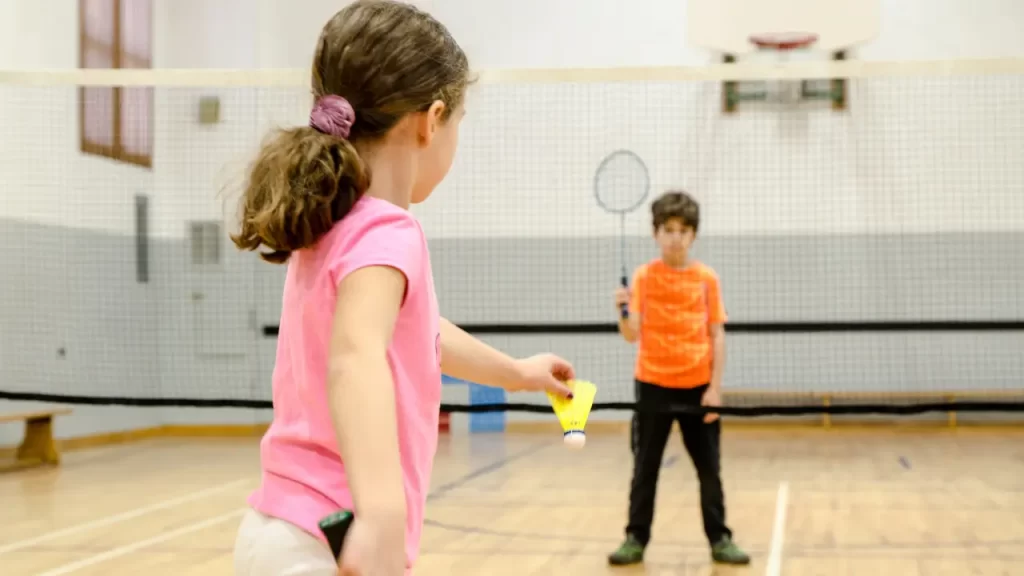
Summary
Badminton provides an exhilarating experience that combines skill, strategy, and agility. This guide has equipped you with essential knowledge on how to play Badminton, whether you’re a beginner or aiming to improve your game. From understanding the rules and court dimensions to learning about faults and serving techniques, you have a solid foundation to excel in Badminton.
However, Badminton delivers more than a game; it helps people live healthier lives. Badminton has a lot of advantages for your physical and mental health because it works out your entire body, enhances reflexes, and significantly affects your mental health. It encourages social interaction, increases mobility, and helps people live longer and healthier lives.
So, grab your racket, put on your specialized Badminton shoes, and confidently step onto the court. Embrace the thrill of fast-paced rallies, perfectly executed smashes, and strategic shots. Whether you aspire to greatness or simply want to enjoy the game with friends and family, Badminton caters to everyone’s desires.
Remember, practice and dedication will sharpen your skills over time. Integrate Badminton into your active lifestyle and witness its positive impact on your overall well-being. Prepare to unlock your potential, experience the exhilaration of victory, and create lasting memories on the Badminton court. Let the shuttlecock soar as you wholeheartedly embrace the wonderful world of Badminton!
